Cyanotypes
Inspiration
During warmer months, I collect plants from forest preserves and local nurseries to incorporate into my work. With no access to a darkroom, I turned to cyanotypes-a 19th-century camera-less photographic process that uses UV light to create vibrant blue images. I experimented with the traditional method on watercolor paper, introducing additional elements like water, bubbles, vinegar, and spices.
Experimentation
To push the medium’s potential, I began creating cyanolumens-an iteration that involves combining cyanotype chemicals with the light sensitive emulsion on photographic paper. Painting cyanotype chemistry onto 20+ year old photo paper added even more unpredictability to my prints. Next I began adding film negatives onto the paper as an ode to traditional darkroom photography. I bleached portions of prints and reworked them, creating multiple exposures.
Connection
Through this work, I embraced the improvisational nature of art making and documented the transformation of each print as it evolved. This process-based approach explores the interplay of nature, light and experimentation. Creating this series was a joyful and deeply gratifying experience that recentered my artistic practice on play and discovery.
Prewash
Once the exposure is complete, any masking materials are carefully removed from the surface of the paper. The image is immediately scanned in its pre-developed state.
Postwash
Next the print is developed in a water bath, where Prussian blue tones lighten and tranform into variations of turquoise. The print is blotted dry and scanned a second time.
Final Print
Then the print is hung to dry. The oxidation process takes up to 24 hours, during which time, the colors deepen to their final blue tones.
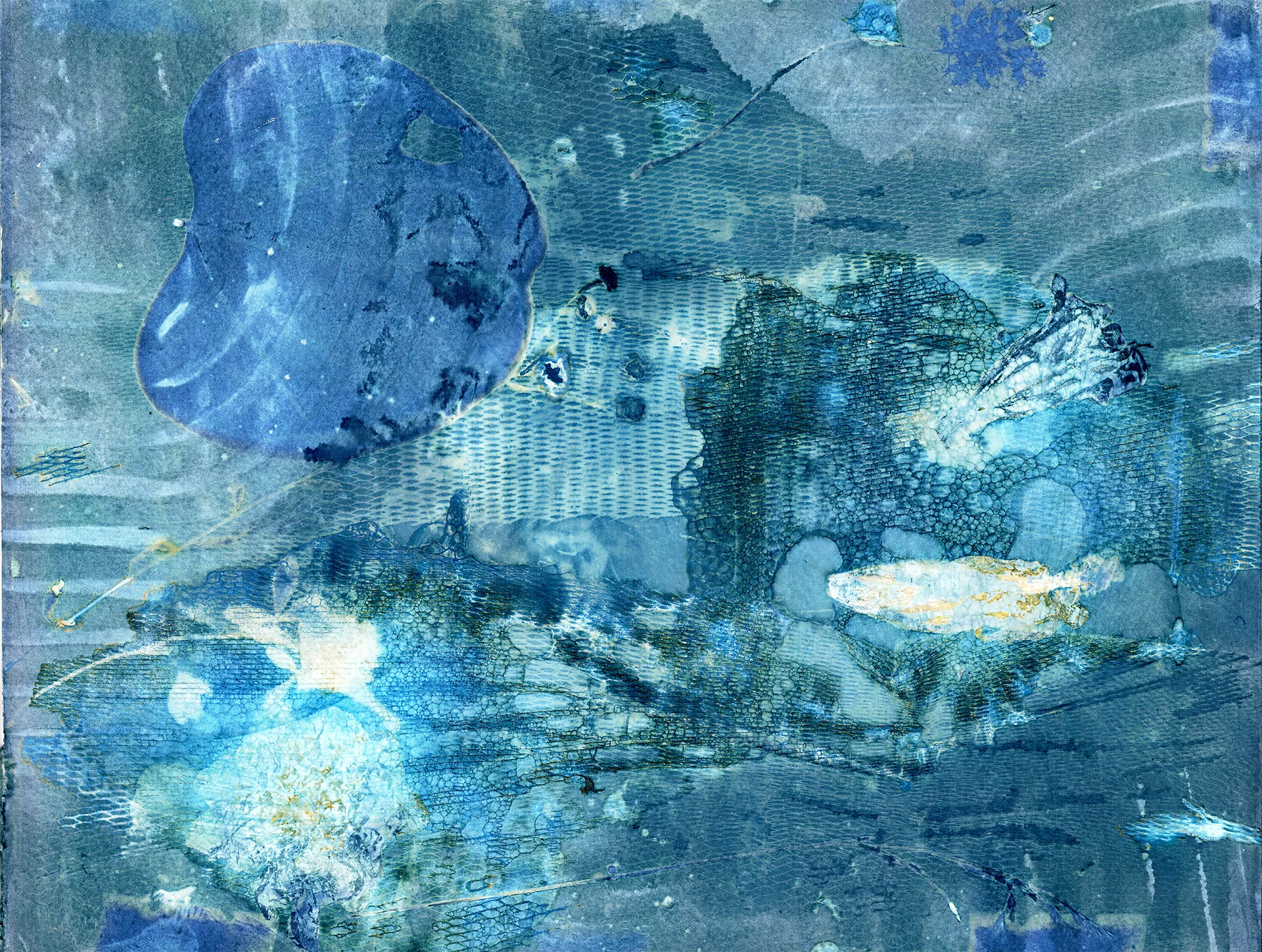
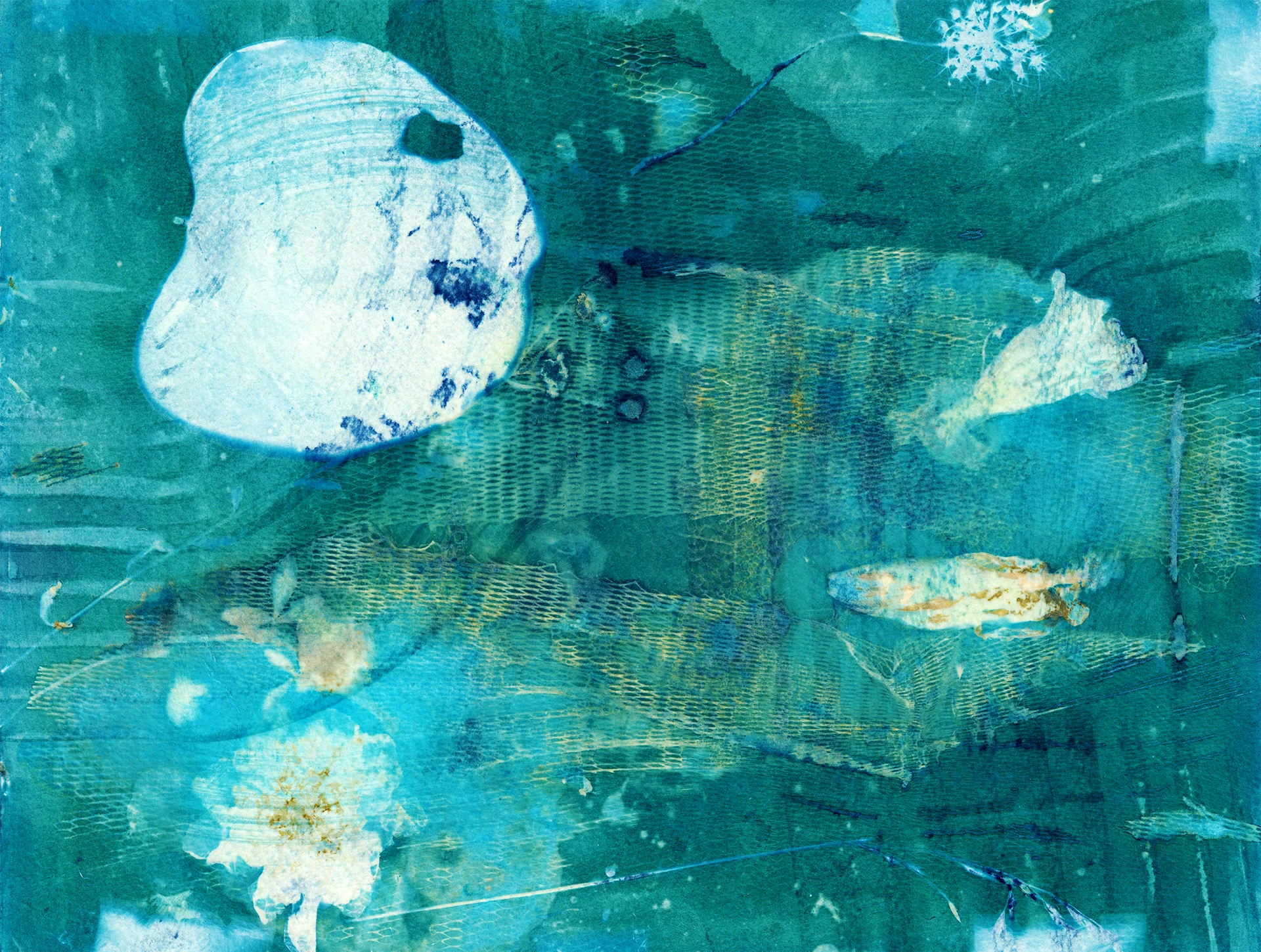
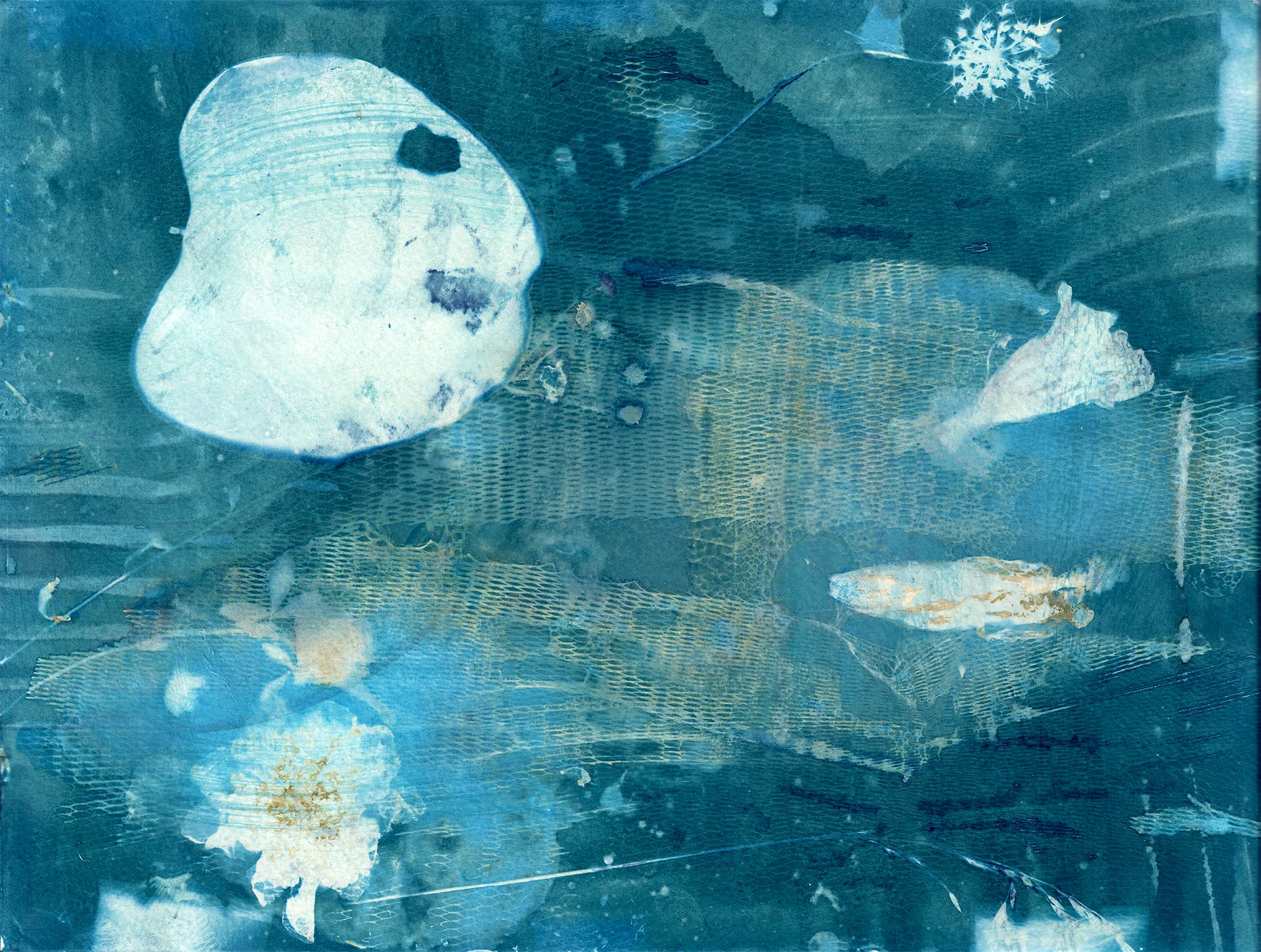
Prewash
Once the exposure is complete, any masking materials are carefully removed from the surface of the paper. The image is immediately scanned in its pre-developed state.
Postwash
Next the print is developed in a water bath, where Prussian blue tones lighten and tranform into variations of turquoise. The print is blotted dry and scanned a second time.
Final Print
Then the print is hung to dry. The oxidation process takes up to 24 hours, during which time, the colors deepen to their final blue tones.
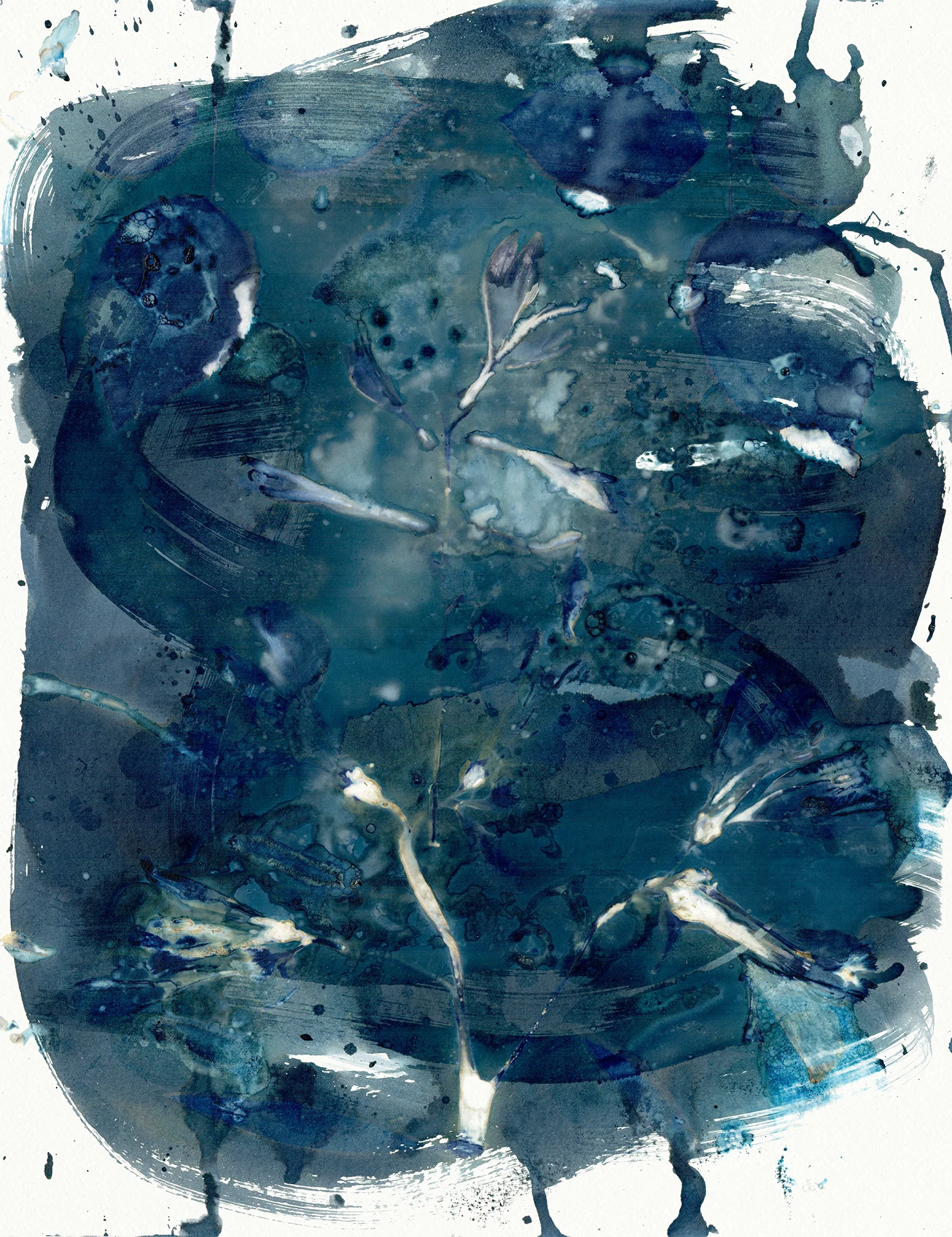
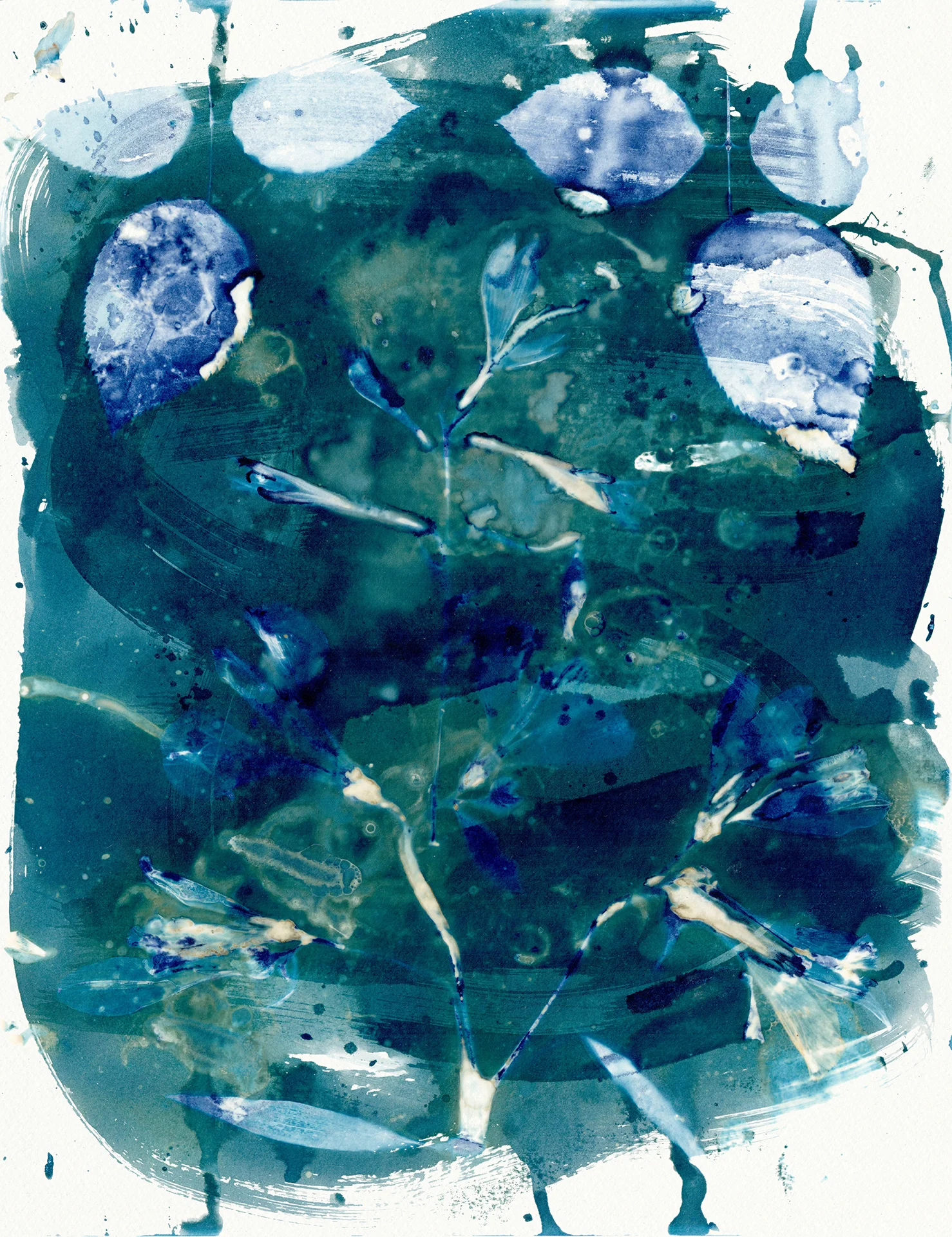

During warmer months, I collect plants from forest preserves and local nurseries to incorporate into my work. With no access to a darkroom, I turned to cyanotypes-a 19th-century camera-less photographic process that uses UV light to create vibrant blue images. I experimented with the traditional method on watercolor paper, introducing additional elements like water, bubbles, vinegar, and spices.
To push the medium’s potential, I began creating cyanolumens-an iteration that involves combining cyanotype chemicals with the light sensitive emulsion on photographic paper. Painting cyanotype chemistry onto 20+ year old photo paper added even more unpredictability to my prints. Next I began adding film negatives onto the paper as an ode to traditional darkroom photography. I bleached portions of prints and reworked them, creating multiple exposures.
Through this work, I embraced the improvisational nature of art making and documented the transformation of each print as it evolved. This process-based approach explores the interplay of nature, light and experimentation. Creating this series was a joyful and deeply gratifying experience that recentered my artistic practice on play and discovery.